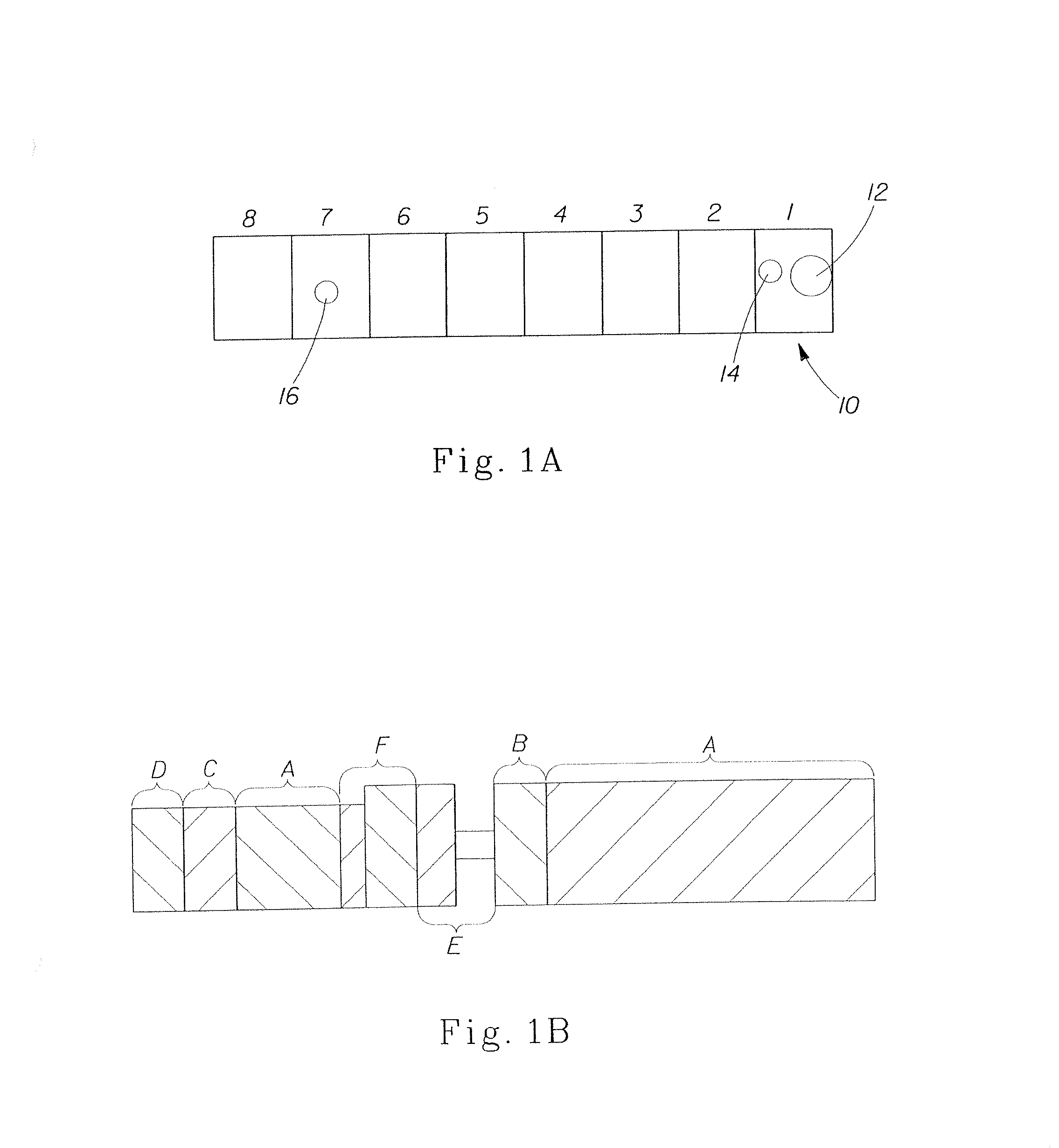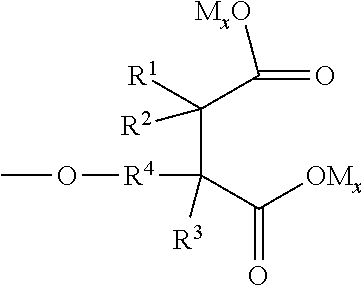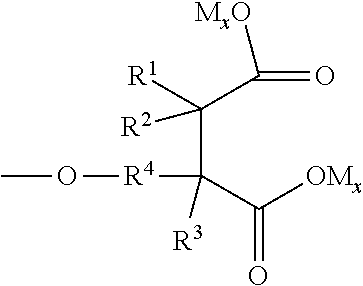Process for Molecular Weight Reduction of Ethersuccinylated Polysaccharides
- Summary
- Abstract
- Description
- Claims
- Application Information
AI Technical Summary
Benefits of technology
Problems solved by technology
Method used
Image
Examples
example 1
Synthesis of Fully Protonated Ethersuccinylated Native Corn Starch
[0128]Native corn starch 10.74% moisture (150.00 g, 0.84 mol), calcium hydroxide 95% (4.64 g, 0.0627 mol), maleic acid (0.83 g, 0.0072 mol) and water (300 mL) are charged to a jacketed 1 L reactor fitted with a recirculation bath, mechanical stirrer, pH probe, and combination gas inlet / syringe port adapter. The reaction mixture is kept at 45° C. under nitrogen for 15 hours (pH 11.724) and then brought to about 23° C. 2.5N HCl was added dropwise at about 23° C. to bring the pH to 1.7 (˜56 mL). The reaction was filtered, washed with water (3×400 mL) until pH of the filtrate was 4.5; this step removes calcium as calcium chloride. The wet cake was suspended in acetone (200 mL), filtered, washed again with acetone (1×100 mL) and allowed to dry at about 23° C. for 2 days to give an ethersuccinylated native corn starch, 140.3 g, 12.64% moisture. A 3.1920 g aliquot of ethersuccinylated native corn was submitted for acid conte...
example 2
Synthesis of Partially Protonated Ethersuccinylated Native Corn Starch
[0129]Native corn starch 10.74% moisture (150.00 g, 0.84 mol), calcium hydroxide 95% (4.64 g, 0.0627 mol), maleic acid (0.83 g, 0.0072 mol) and water (300 mL) are charged to a jacketed 1 L reactor fitted with a recirculation bath, mechanical stirrer, pH probe, and combination gas inlet / syringe port adapter. The reaction mixture is kept at 45° C. under nitrogen for 15 hours (pH 11.724) and then brought to about 23° C. 2.5N HCl was added dropwise at about 23° C. to bring the pH to 4.0 (˜50 mL). The reaction was filtered, washed with water (3×400 mL) until pH of the filtrate was 4.5; this step removes calcium as calcium chloride. The wet cake was suspended in acetone (200 mL), filtered, washed again with acetone (1×100 mL) and allowed to dry at about 23° C. for 2 days to give an ethersuccinylated native corn starch, 140.3 g, 12.64% moisture. A 3.1920 g aliquot of ethersuccinylated native corn was submitted for acid c...
example 3
Synthesis of Reduced Molecular Weight Ethersuccinylated Corn Starch Via Twin-Screw Extruder
[0130]The synthesis of Example 1 was scaled-up to provide 600 lbs of fully protonated ethersuccinylated native corn starch with 0.0081 DSE. In a 40:1 APV Baker twin-screw extruder with eight temperature zones, illustrated in FIGS. 1A and 1B and described below, ethersuccinylated corn starch is mixed with 35% ammonium methanesulfonate, 80% Aerosol MA-80-PG surfactant, 1% ammonium hydroxide, and water (added via PREP 100 HPLC pumps (Chrom Tech, Apple Valley Minn.)) in zone 1. Feed rates for each condition are shown in Table 1 below.
TABLE 11%Ethersuc.35% AmmoniumAerosolAmmoniumCondi-StarchmethanesulfonateMA80hydroxideWatertion(g / min)(g / min)(g / min)(g / min)(g / min)2A3705.45.46.81322B3725.45.710.81272C3735.45.401382D3705.75.15.81322E3705.45.010.81382F3715.15.10118
[0131]This mixture is then conveyed down the barrel through zones 2 through 8 and cooked into a melt-processed reduced molecular weight ethe...
PUM
| Property | Measurement | Unit |
|---|---|---|
| Temperature | aaaaa | aaaaa |
| Temperature | aaaaa | aaaaa |
| Molality | aaaaa | aaaaa |
Abstract
Description
Claims
Application Information
 Login to View More
Login to View More - R&D
- Intellectual Property
- Life Sciences
- Materials
- Tech Scout
- Unparalleled Data Quality
- Higher Quality Content
- 60% Fewer Hallucinations
Browse by: Latest US Patents, China's latest patents, Technical Efficacy Thesaurus, Application Domain, Technology Topic, Popular Technical Reports.
© 2025 PatSnap. All rights reserved.Legal|Privacy policy|Modern Slavery Act Transparency Statement|Sitemap|About US| Contact US: help@patsnap.com



